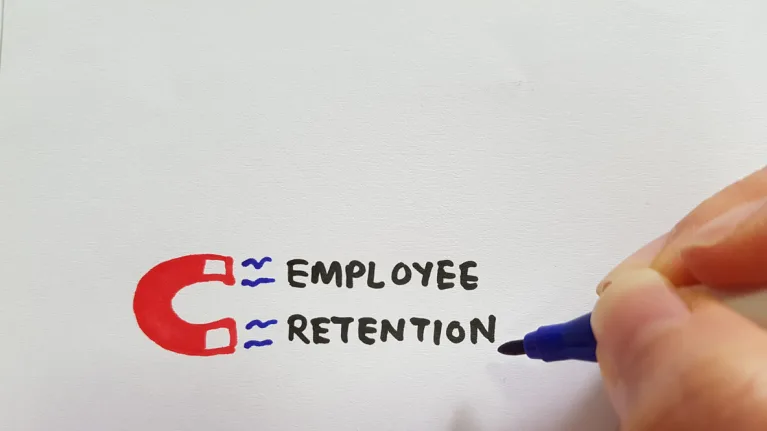Frontline Employee Training: Key Elements & Measuring the Success
 Omer Usanmaz
·
5 minute read
Omer Usanmaz
·
5 minute read
Today, frontline employees are the face of a company. They are customers' first point of contact, often playing a massive role in delivering exceptional customer service. Whether in retail, hospitality, or customer service, frontline teams need the right skills and knowledge to perform their job well. That’s why frontline employee training is essential for any business wanting to improve employee retention and boost engagement.
This article will explore:
- Why frontline employee training is vital
- The benefits it brings to both frontline workers and the business
- How companies can develop an effective training program
- How training helps with employee retention and engagement strategy
- Key factors that contribute to business success
- How technology might be helpful in terms of frontline employee training
With that said, let’s explore more.
Why Frontline Employee Training Matters
Firstly, frontline training has been identified as the key to improving the organization. These employees are primarily at the customer contact interface and, as such, play a crucial role in customer trust and satisfaction. Employees without the necessary training could worsen a business's image by straining customer relations. The training required also includes recognizing the capabilities of the frontline workers so that they understand and align with the company’s values and know the proper approach to customers.
Frontline teams with proper training make fewer errors, which makes customers happy. This results in return business, word-of-mouth recommendations, and customer loyalty. Training also builds problem-solving skills that can help employees tackle challenging moments in their work.
For this reason, training the frontline workforce increases customer satisfaction and organizational success. A business may be able to achieve its objectives and cope with a high level of turnover.
The Impact on Employee Retention
Employee retention is a significant concern for many companies, especially in industries with high turnover rates. One effective way to reduce turnover is by offering proper ongoing training programs.
Training gives key workers a sense of belonging and purpose within the organization. It shows that the company is willing to invest in its development opportunities, which leads to increased loyalty. Frontline staff who receive regular training often feel more confident and are better equipped to do their jobs. This reduces stress and frustration, two common reasons for employee turnover.
According to a study by LinkedIn Learning, 94% of employees would stay longer at a company that invests in their learning and career development. This highlights the strong connection between training and employee retention. Offering opportunities for continuous learning and growth also encourages employees to stay engaged and motivated, ultimately benefiting both the employee and the company.
Boosting Employee Engagement
Employee engagement is the degree of passion, enthusiasm, and involvement an employee has for their work. Engaged employees are more effective, deliver a better customer experience, and are less likely to leave.
Frontline workforce training plays a significant role in increasing engagement. Properly trained employees know what they must do and how it impacts the company's goals. They will likely be valued and feel connected to the company’s morale.
Job training helps people learn new approaches and grow. Employees feel more motivated when they see that the company is invested in them. According to Gallup research, engaged employees are 23% more productive, leading to a 20% increase in sales over workers who only do the bare minimum.
Key Elements of Effective Training Programs
To maximize the benefits of frontline employee training, companies must create training initiatives that are relevant, engaging, and practical. Some key components of an effective frontline employee training program are listed below:
Clear Objectives
Every frontline employee training solution should have clear goals. These business objectives help employees understand what they need to learn and why it’s essential.
For example, if the goal is to improve customer service levels, the training content should focus on effective communication techniques and problem-solving strategies. There are various types of employee training, and choosing the right type for your needs can make a big difference.
Practical Skills
Training should include practical, hands-on experiences and training materials. This means giving frontline workers real-life scenarios to practice in. Training modules like role-playing customer interactions or simulations can help employees apply critical skills they’ve learned in a safe environment.
Regular Updates
The business world is constantly changing, and so are customer needs. Regular updates to training initiatives ensure employees stay current with the latest trends and technologies. This enhances their communication skills and improves the overall employee experience.
Keeping training fresh and relevant helps employees stay engaged. It also excites them to learn new things, which boosts employee satisfaction.
Feedback and Support
Providing feedback during and after training helps employees understand their strengths and areas for improvement. Support from supervisors and peers also makes a big difference. Encouragement and guidance help employees feel more confident in their new communication skills and other soft skills.
Interactive Methods
Traditional training methods can be tedious. Use interactive methods with a digital learning platform to keep frontline staff interested. Combining excellent customer service training with additional training methods like videos, quizzes, and group activities makes learning more engaging. This helps employees retain information better and enjoy the training process.
Follow-Up and Reinforcement
Workforce training doesn’t end after the initial session. Follow-up sessions and ongoing support are crucial. Regular check-ins and refresher courses help reinforce what employees have learned and address any new challenges they may face.
Measuring Training Success
After implementing a training program, it’s essential to measure its success. Companies can use several methods to determine whether the training has had a positive impact:
- Employee Feedback: Regular surveys or one-on-one meetings can help gauge employees' feelings about the training. Are they more confident in their current roles? Do they feel more engaged and motivated? Employee feedback is valuable in assessing the program’s effectiveness.
- Performance Metrics: Tracking performance metrics, such as customer satisfaction scores, productivity levels, sales figures, and performance evaluation, can provide insight into how the training has impacted the business. If employees are applying what they’ve learned, these metrics should improve.
- Retention Rates: If employee turnover decreases after implementing a training program, it’s a strong indicator that the training is working. Happy, well-trained frontline workers are likelier to stay with the company long-term.
- Customer Feedback: Since frontline workers interact directly with customers, gathering customer feedback is essential. Are they receiving better service? Are their concerns being addressed more effectively? Positive customer feedback often correlates with successful employee training.
The Role of Technology in Training
Advancements in technology are transforming the landscape of employee training and enhancing learner engagement. Online training platforms, for example, enable employees to learn at their convenience, anytime and anywhere, using mobile devices such as phones or laptops. This flexibility allows team members to seamlessly integrate learning into their demanding schedules while maintaining high levels of engagement.
Moreover, virtual reality can simulate real-life scenarios, providing frontline workers practical, hands-on experience in a controlled environment. These immersive experiences can be accessed in real-time through digital learning platforms, fostering peer learning and making training both flexible and engaging.
In addition, mobile learning apps, social learning, and other digital tools offer on-demand access to resources and support, eliminating the need to search through paperwork or wait for scheduled sessions. By leveraging these technological innovations, organizations can deliver training that is not only practical but also engaging, ensuring their teams are well-prepared to succeed.
This is where Qooper Mentoring Software comes in—offering personalized learning paths, social learning features, and easy access to mentors and peers. Qooper empowers employees with on-demand resources and support, helping them stay connected, engaged, and prepared for success. With a platform like Qooper, organizations can create a seamless blend of formal and informal learning, making training more impactful and future-proof.
Takeaway
Frontline employees serve as the foundation of any organization. Investing in their training improves their performance, enhances customer satisfaction, reduces turnover, and increases employee engagement. Businesses can create effective training programs that benefit employees and the organization by providing clear objectives, interactive learning, ongoing support, and vital leadership roles.
To make training work, focus on clear career goals, hands-on skills, regular updates, and fun, interactive methods such as mentorship. To elevate your training program, Qooper provides comprehensive solutions tailored to your needs. Our customized training approaches ensure engaging and compelling learning experiences. Explore how Qooper can enhance your business by optimizing frontline employee training and driving success.






